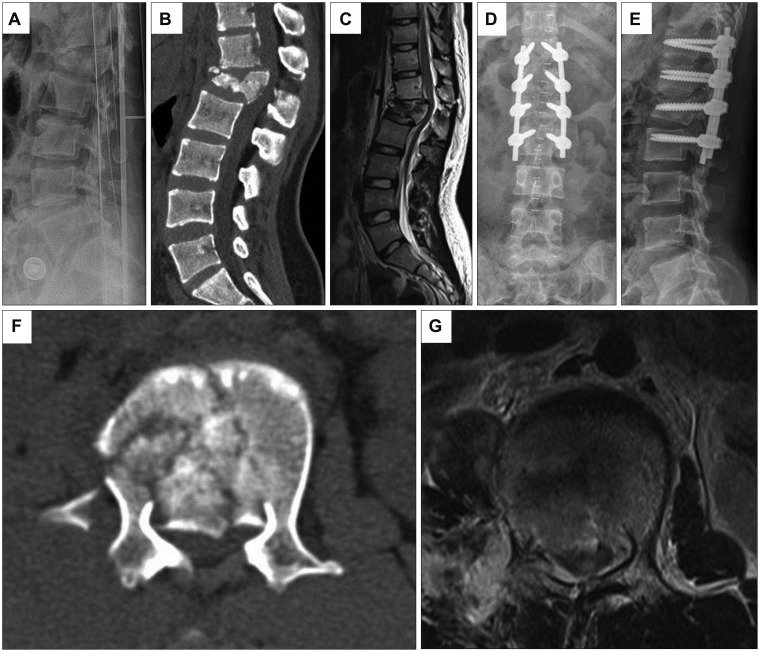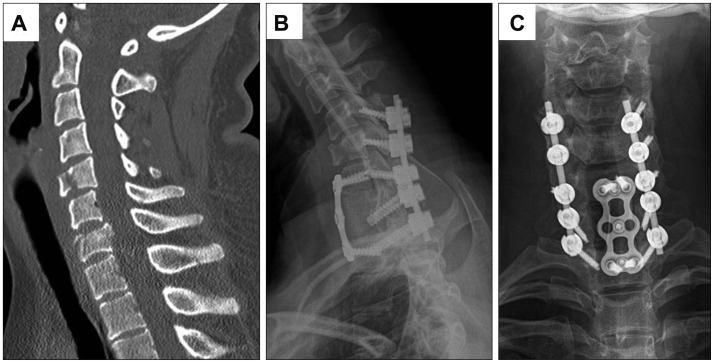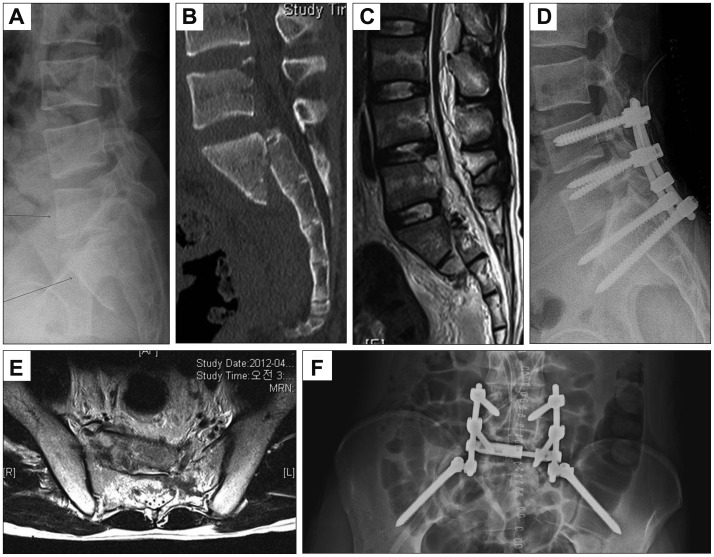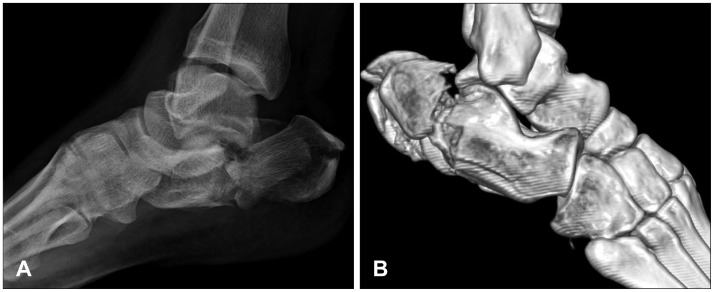Korean J Neurotrauma.
2014 Oct;10(2):70-75. 10.13004/kjnt.2014.10.2.70.
Burst Fractures as a Result of Attempted Suicide by Jumping
- Affiliations
-
- 1Department of Neurosurgery, Gangnam Severance Hospital, Spine and Spinal Cord Institute, Yonsei University College of Medicine, Seoul, Korea.
- 2Department of Neurosurgery, International St. Mary's Hospital, Catholic Kwandong University, Incheon, Korea. duratear@gmail.com
- KMID: 2256234
- DOI: http://doi.org/10.13004/kjnt.2014.10.2.70
Abstract
OBJECTIVE
Jumping from high place for the purpose of suicide results in various damages to body area. A burst fracture of vertebrae is representative of them and we reviewed eight patients who were diagnosed with spinal burst fracture following suicide falling-down. The demographics, characteristics, performed operation, combined injuries, psychological past histories of the patients were analyzed.
METHODS
A retrospective study was made of patients who are diagnosed with vertebral burst fracture from falling-down with the purpose of suicide admitted to department of neurosurgery of the author's hospital, covering the period between 2003 and 2012.
RESULTS
Total eight patients were suicidal jumper. There were eleven vertebral burst fractures in eight patients and mean age was 26.5 years old. Seven patients already had psychological past history and there were various combined injuries except vertebrae burst fracture. The ankle fracture such as calcaneus, talus, navicular and malleolus was the most common injury and there were also various combined injury.
CONCLUSION
Suicidal jumper is different from incidental faller in some aspects because of different injury mechanism. For managing suicidal jumper, physician had to consider patients' age, affected site, psychiatric problem and combined injuries. Each department related to the injuries of patient have to cooperate each other with departments of psychiatry and rehabilitation from beginning to end.
Keyword
MeSH Terms
Figure
Reference
-
1. Ajdacic-Gross V, Weiss MG, Ring M, Hepp U, Bopp M, Gutzwiller F, et al. Methods of suicide: international suicide patterns derived from the WHO mortality database. Bull World Health Organ. 2008; 86:726–732. PMID: 18797649.2. Bradford DS, McBride GG. Surgical management of thoracolumbar spine fractures with incomplete neurologic deficits. Clin Orthop Relat Res. 1987; (218):201–216. PMID: 3568482.
Article3. Chapman JR, Anderson PA. Thoracolumbar spine fractures with neurologic deficit. Orthop Clin North Am. 1994; 25:595–612. PMID: 8090473.
Article4. Kaplan MS, McFarland BH, Huguet N, Conner K, Caetano R, Giesbrecht N, et al. Acute alcohol intoxication and suicide: a gender-stratified analysis of the National Violent Death Reporting System. Inj Prev. 2013; 19:38–43. PMID: 22627777.
Article5. Katz K, Gonen N, Goldberg I, Mizrahi J, Radwan M, Yosipovitch Z. Injuries in attempted suicide by jumping from a height. Injury. 1988; 19:371–374. PMID: 3267637.
Article6. Murray CJ, Lopez AD. Alternative projections of mortality and disability by cause 1990-2020: Global Burden of Disease Study. Lancet. 1997; 349:1498–1504. PMID: 9167458.
Article7. Oquendo MA, Kamali M, Ellis SP, Grunebaum MF, Malone KM, Brodsky BS, et al. Adequacy of antidepressant treatment after discharge and the occurrence of suicidal acts in major depression: a prospective study. Am J Psychiatry. 2002; 159:1746–1751. PMID: 12359682.
Article8. Richter D, Hahn MP, Ostermann PA, Ekkernkamp A, Muhr G. Vertical deceleration injuries: a comparative study of the injury patterns of 101 patients after accidental and intentional high falls. Injury. 1996; 27:655–659. PMID: 9039364.
Article
- Full Text Links
- Actions
-
Cited
- CITED
-
- Close
- Share
- Similar articles
-
- Frontal Lobe Dysfunction in a Depressed Patient Who Survived a Suicide Attempt by Jumping from the Bridge on the Han River
- Four Cases of Attempted Suicide in Childhood
- Medical Discourse on Suicide in Post-War Britain - To Decriminalize Suicide and Attempted Suicide -
- Early Detection and Prevention of Elderly Suicide
- Factors Affecting Nursing Performance for Patients after Attempted Suicide among Clinical Nurses





